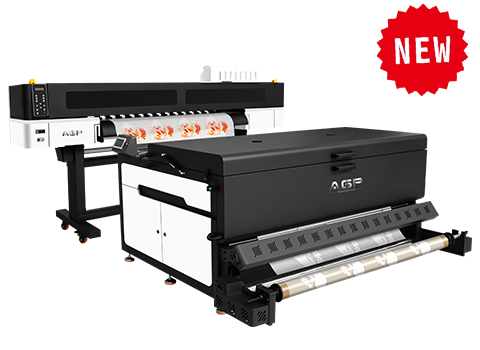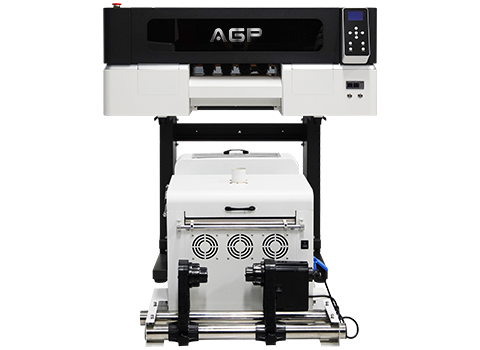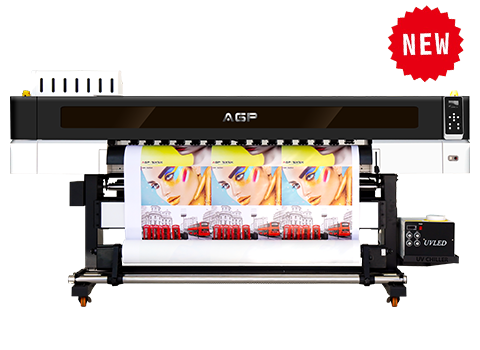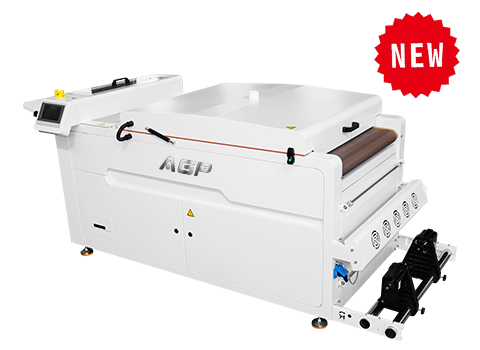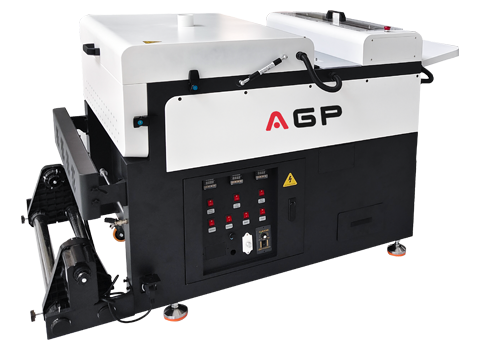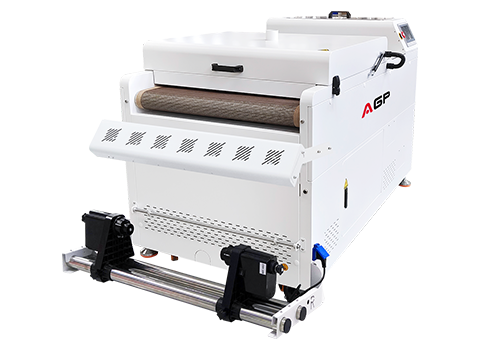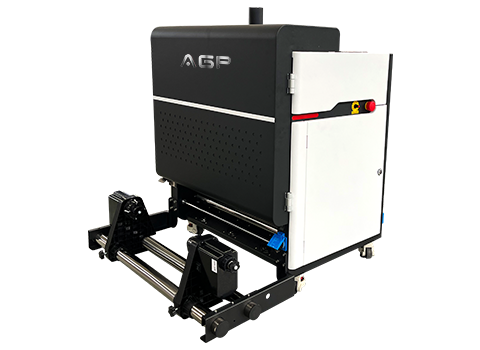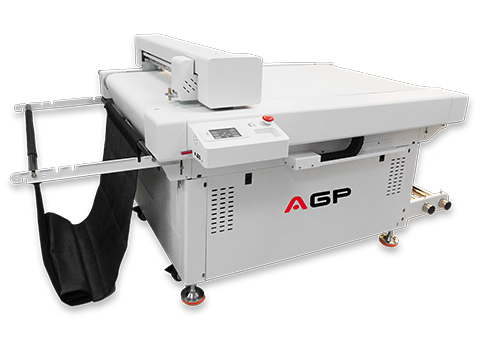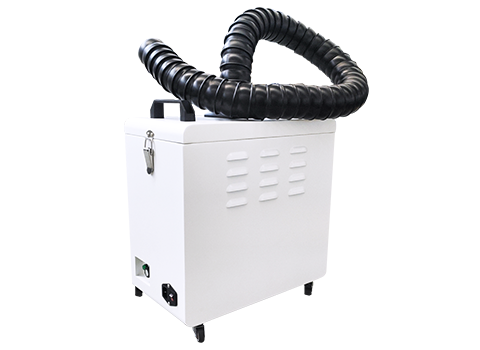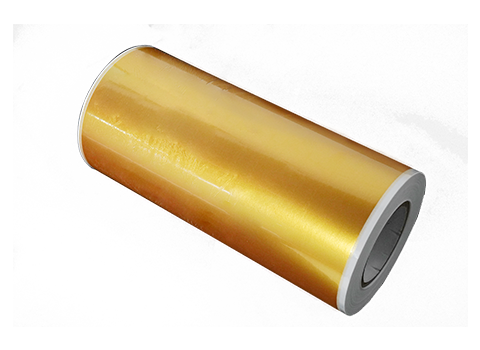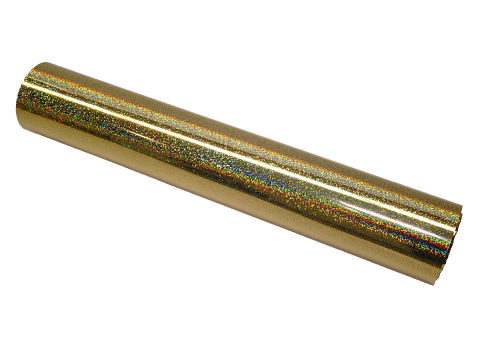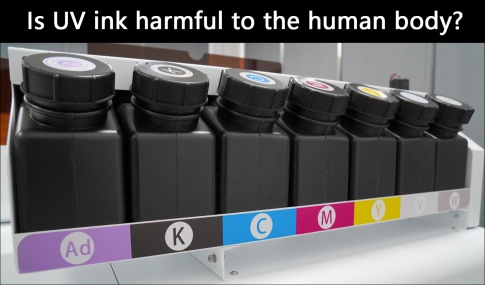Small Business Marvels: Choosing the Best DTF Printer for 2024
Are you looking to take your business or personal projects to the next level? DTF transfer printing is a game-changer, providing crisp, high-quality prints on a wide range of media. In this article, we'll guide you through the world of DTF printing, from understanding what it is to exploring the best DTF printer options in 2024.
Whether you're a seasoned DTF aficionado or a newcomer to the craft, this article provides invaluable insights to take your prints to the next level. From selecting the right printer to optimizing workflows and mastering dtf transfer printing at home, we cover it all.
If you're ready to unlock the potential of DTF printing, read on for our expert advice and take the first step in your DTF printing journey.
Key Takeaways:
- DTF Printing provides high-quality transfers on a wide range of media.
- Choosing the right DTF printer is crucial for achieving the desired results.
- Mastering DTF transfer printing requires following certain techniques and best practices.
- DTF printing at home is an affordable and convenient option.
- Not all DTF films are compatible with every printer.
Understanding DTF Printing
If you're looking to create high-quality transfers, you may have come across the term DTF printing. But what is DTF printing, and how does it differ from other printing methods?
Unlike traditional printing techniques that involve transfer paper, DTF printing uses a direct-to-film process. This method involves printing an image directly onto a clear film before pressing it onto the garment or substrate. The film used in DTF printing is specially coated and made from a polyurethane material that's designed to fuse with the ink, ensuring long-lasting and vibrant transfers.
DTF printing has several advantages over other printing methods, including the ability to produce finely detailed and vivid designs, the flexibility to print on a wide range of materials, and the capability to print on dark backgrounds without losing color vibrancy. Additionally, the direct-to-film process eliminates the need for the multiple steps required in traditional methods, such as weeding and cutting transfer paper, making DTF printing a quicker and more streamlined process.
Exploring the DTF Printer Market
The DTF printing market is expanding, providing an abundance of options for individuals and businesses looking to invest in a DTF printer. We analyzed the current DTF printer market and have compiled a list of the key players and their offerings to help you make an informed decision.
| Brand | Model | Key Features |
|---|---|---|
| Epson | SureColor F570 | High-quality prints, efficient, low-cost ink replacement |
| Mimaki | TXF150-75 | Wide-format printing, excellent color consistency, durable prints |
| TEXTEK | DTF-T652 Printer | No limit on fabric materials support 6-color printing, fuller color |
Other notable brands include Brother, Ricoh, and Epson. Before making a purchase, ensure that the printer meets your specific needs. Factors to consider include budget, print size, resolution, and reliability, among others.
Stay tuned for our next section, where we will discuss the important factors to consider when choosing a DTF printer.
Factors to Consider When Choosing a DTF Printer
When it comes to choosing the right DTF printer for your business or home setup, certain factors need to be taken into account to ensure your desired results are achieved. The following are the key factors to consider:
- Print size: The size of the prints you want to produce will determine the type of DTF printer you need. Make sure you choose a printer that can handle the size of prints you require.
- Resolution: A high resolution is essential for producing crisp, high-quality prints. Consider the printer's resolution capabilities when making your selection.
- Cost: DTF printers can range in price, so it's important to set a budget and find a printer that offers the features you require at a reasonable cost.
- Reliability: Look for a printer that is known for its durability and reliability, ensuring that it will perform well over time and minimize downtime for maintenance or repairs.
Consider these factors carefully when selecting your DTF printer, and be sure to compare various models to find the one that best meets your specific needs.
Top DTF Printers of 2024
Are you in the market for a new DTF printer but don't know where to start? Look no further than our list of the top DTF printers of 2024. We've researched to save you time and effort in finding the best printer for your DTF transfer printing needs.
Ricoh Ri 2000
| Features | Pros | Cons |
|---|---|---|
| Print resolution: 1200 x 1200 dpi | High print speed: up to 27 ppm | Expensive compared to other options |
| Max print size: 11.7" x 17" | Easy to set up and use | Not ideal for bulk printing |
| Price: $12,800 | Low ink cost per print |
Epson SureColor P8000
| Features | Pros | Cons |
|---|---|---|
| Print resolution: 2880 x 1440 dpi | Large color gamut for accurate color reproduction | Expensive initial investment |
| Max print size: 44" | High-quality prints with deep blacks | Requires frequent maintenance and cleaning |
| Price: $4,995 | Can handle a variety of media types and thicknesses |
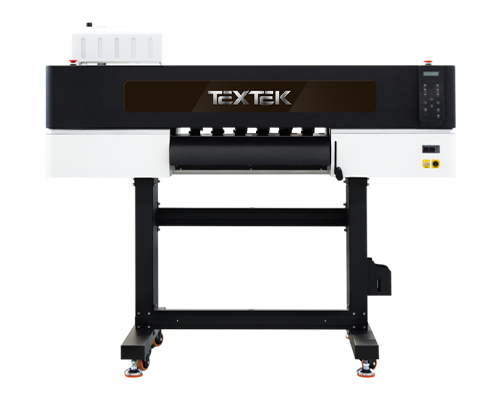
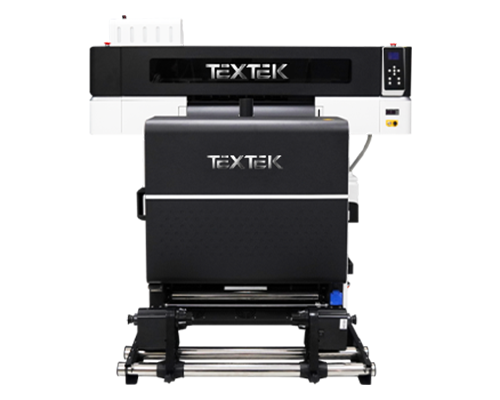
TEXTEX DTF-T652 Printer
| Features | Pros | Cons |
|---|---|---|
| Print head: Epson I3200-A1/Epson I1600-A1 | High-quality prints with vibrant colors | Higher price point |
| Max print size: 600mm | Easy to use and maintain | Slightly slower print speed |
| Price: Contact Us | Compatible with a wide range of DTF films |
These top DTF printers, including our DTF-T652 product, offer different features and price points, making it easier to find the best one for your business or personal needs. Consider the size of prints you need, your budget, and the features that matter most to you when making your selection. Test out a few options, including our DTF-T652, to make sure you find the perfect fit for you.
Achieving Exquisite DTF Transfer Printing
DTF printing provides incredible flexibility and versatility in creating customized prints. However, the quality of DTF transfer printing can vary significantly based on several factors. Here are some tips to ensure high-quality DTF prints:
- Use high-quality DTF film that is compatible with your printer.
- Ensure your printer is clean and free from dust to avoid any debris on the transfer.
- Select the right transfer paper that has the correct size, shape, and adhesion for the image.
- Adjust printer settings to match the DTF film and image requirements.
- Always follow the manufacturer's instructions for printing, drying, and pressing.
These tips can help you achieve high-quality DTF transfer printing that stands out from the rest. Remember, the key to success lies in investing time and effort to master the art of DTF printing.
Mastering DTF Printing at Home
If you're looking to print high-quality transfers from the comfort of your home, DTF printing is a cost-effective and convenient option. In this section, we'll guide you through the step-by-step process of setting up a DTF printing station at home that produces stunning results.
Step 1: Equipment
The first step in setting up your home-based DTF printing station is to assemble the necessary equipment. Here are the essentials you'll need:
- A DTF printer
- A heat press
- DTF film
- DTF powder
- A computer with design software installed
Step 2: Materials
Once you have all the equipment in place, it's time to gather the materials for the printing process. Along with DTF film and powder, you'll need:
- A T-shirt or other transferable garment
- Masking tape
- A cutting mat and blade
- Parchment paper
Step 3: Printing
Now that you have everything you need, it's time to start the printing process. Here's a brief overview of the steps involved:
- Create your design using your computer and design software.
- Print your design onto the DTF film using the DTF printer.
- Apply the DTF powder over the printed design.
- Use the heat press to transfer the design onto your garment.
- Peel off the DTF film and powder to reveal your high-quality transfer.
Step 4: Tips for Success
While DTF printing at home can be a straightforward process, it's important to follow some tips to maximize success. Here are a few:
- Ensure that your printer and heat press are compatible with the DTF film and powder you select.
- Experiment with different transferable materials such as cotton, polyester, and blends to see what works best.
- Adjust the temperature and pressure on your heat press for optimal transfer results.
- Store your DTF film and powder in a cool, dry place to prevent moisture buildup.
By following these steps and tips, you'll be well on your way to mastering DTF printing at home and producing high-quality transfers for your business or personal projects.
Compatibility Advice: Using DTF Film with Various Printers
DTF printing is a popular and cost-effective method for creating high-quality transfers. However, not all DTF films are compatible with every printer. It is essential to choose the right DTF film that is compatible with your printer to ensure optimal performance and print quality. In this section, we will provide valuable advice on how to select the right DTF film for your printer.
Understanding DTF Film Compatibility
DTF film compatibility refers to the ability of the film to work with a particular printer. Various factors like ink receptive coating, film material, and thickness play a vital role in determining DTF film compatibility with printers.
Choosing the Right DTF Film for Your Printer
When selecting a DTF film that is compatible with your printer, it is essential to consider the following factors :
- Ink compatibility: Ensure the ink used in the printer is compatible with the film's coating, adhesion properties, and thickness.
- Printer model: Different printer models are compatible with different types of DTF films. Choose a DTF film that is compatible with your printer model for optimal printing results.
- Film thickness: The thickness of DTF films varies depending on the type of material used in its manufacturing. Ensure that the thickness of the DTF film you choose is compatible with your printer's printing capabilities.
Compatibility Chart for Popular DTF Printers and Films
| Printer Model | Recommended DTF Films |
|---|---|
| Epson SureColor P800 | Softpapex Eco-solvent DTF film, Inkjet Star TPU DTF film, Neojet DTF film |
| Epson EcoTank ET-15000 | Fimor Dynamic DTF film, Resolute SFX DTF film, DTF transfer film by Plotter Doctor |
| Roland DG VersaStudio BN-20 | Printex DTF film, DTF Direct Film by USA Equipment Direct |
| TEXTEK DTF-T652 Printer | DTF film, Inkjet PET Heat Transfer Film,Luminous Film,Reflective Film |
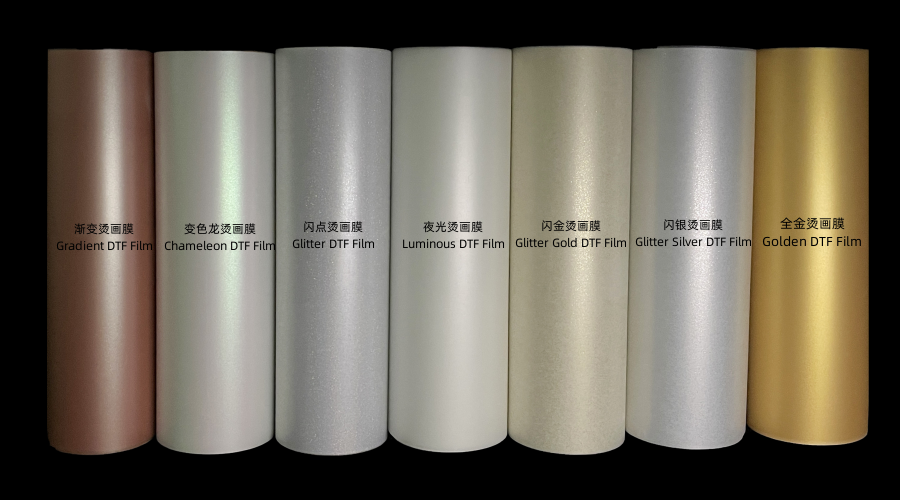
It is recommended to choose TEXTEK DTF-T652 Printer, which is compatible with various DTF special films.
Note: This chart is not an exhaustive list but provides a general idea of DTF printer compatibility with various DTF films.
Troubleshooting Common DTF Printing Issues
DTF printing can encounter occasional issues that may affect the quality of the prints. Some of the common DTF printing problems include:
- White spaces or gaps in the design
- Colors bleeding or smudging
- Poor image quality or fuzzy prints
- Ink clogging or nozzles getting blocked
To overcome these common DTF printing problems, try the following troubleshooting tips:
- Check and Clean the Printer: Before starting dtf printing, make sure the printer is clean and free of any dust or debris. Take a few minutes to clean the printer heads and nozzles to avoid ink clogging and blockage.
- Choose the Right Settings: Select the appropriate printer settings for the film type, resolution, and color profile. Adjust the brightness and contrast settings to ensure the best image quality.
- Use High-Quality Ink: Always use quality ink that is suitable for your printer model and compatible with the dtf film. Poor quality ink can result in smudging or bleeding of the prints.
- Use Compatible DTF Film: Ensure that the dtf film is compatible with your printer model and the ink type. Using incompatible film can lead to poor-quality prints or no prints at all.
- Check the Drying Time: Different types of ink and film require different drying times. Make sure to wait for the ink to dry completely before cutting or peeling the prints.
"By following these simple troubleshooting tips, you can ensure high-quality prints and avoid common dtf printing issues."
Maintenance and Care of DTF Printers
Proper maintenance and care are essential for extending the life and ensuring optimal performance of your DTF printer. Here are some maintenance tips and best practices to keep your printer in top shape:
Cleaning
Regular cleaning is crucial to maintaining a reliable DTF printer. Ensure that your printing surface is clean and free from debris before every print job. When cleaning your printer, use a soft, lint-free cloth and mild cleaning solution. Avoid using abrasives or harsh chemicals that can damage the printer's delicate parts.
Ink Management
Proper ink management is essential for achieving quality prints and preventing clogs and other issues. Ensure that your ink cartridges are properly installed, tightly secured, and free from leaks. Perform regular ink cartridge maintenance, such as agitating or shaking the cartridges to prevent sediment buildup.
Storage
When not in use, always store your DTF printer in a clean, dry, and dust-free environment, protected from extreme temperatures and humidity. Consider covering your printer to prevent dust and debris from accumulating on the external housing and internal parts.
Upkeep
Perform regular upkeep on your printer, such as cleaning the printhead and replacing worn-out parts like rollers and belts. Consult your manufacturer's user manual or support team for specific maintenance procedures and recommended replacement parts.
Future Trends in DTF Printing
DTF printing has come a long way since its inception, and its future looks bright. With technological advancements, we can expect DTF printing to become more efficient, affordable, and environmentally friendly.
Advancements in DTF Inks
Soon, we may see the emergence of new DTF inks that have enhanced durability and resistance to fading, cracking, and peeling. These inks will also be capable of producing a broader range of colors, allowing for more vibrant and precise prints.
Increased Integration with 3D Printing
DTF printing may soon become integrated with 3D printing, allowing for highly complex and detailed prints. This collaboration will enable designers to create stunning 3D models with vivid and dynamic colors, textures, and patterns.
New DTF Printer Designs
We can expect new DTF printer designs in the near future that are more compact, energy-efficient, and user-friendly. The printers will also be more versatile, enabling users to produce a wider range of products.
Automation and Artificial Intelligence
With the implementation of automation and artificial intelligence, DTF printing will become even more accessible and affordable. Auto-calibration, image enhancement, and other automated features will simplify the printing process, making it more efficient and convenient.
Conclusion
Congratulations on reaching the end of this guide on DTF printing! We hope you found it informative and engaging. By now, you should have a good understanding of what DTF printing is, how it differs from other printing methods, and the important factors to consider when choosing a DTF printer.
If you're looking to elevate your business or personal projects to new heights, DTF printing is an excellent option. With the right equipment, materials, and techniques, you can achieve stunning results that stand out.
Remember to follow the tips and best practices presented in this guide to ensure high-quality DTF prints. And don't forget to regularly maintain and care for your DTF printer to ensure its longevity and optimal performance.
As technology continues to advance, we can expect exciting new developments in the world of DTF printing. Stay ahead of the curve by keeping an eye on future trends and potential advancements.
Thank you for reading, and we wish you all the best in your DTF printing endeavors!
FAQ
What is DTF printing?
DTF printing, also known as direct-to-film printing, is a digital printing method that involves transferring a design from a special film onto various materials, such as fabric, using heat and pressure.
How does DTF printing differ from other printing methods?
Unlike traditional printing methods like screen printing or heat transfer vinyl, DTF printing allows for more detailed and vibrant prints, with the ability to achieve complex designs and gradients without the need for multiple layers or color separations.
What factors should I consider when choosing a DTF printer?
When selecting a DTF printer, it's important to consider factors such as print size, resolution, cost, reliability, and the compatibility of the printer with different materials and films.
Can I achieve high-quality DTF prints at home?
Yes, it is possible to achieve high-quality DTF prints at home. With the right equipment, materials, and proper techniques, you can create professional-level prints from the comfort of your own home.
Which are the top DTF printers of 2024?
Here is a list of the top DTF printers available in 2024: [include list of top DTF printers with detailed reviews and their features]
How can I achieve exquisite DTF transfer printing?
To achieve exquisite DTF transfer printing, it is important to follow certain techniques and best practices, such as using high-quality films, ensuring proper curing, and optimizing your printer settings for the best results.
Is DTF printing suitable for home use?
Yes, DTF printing can be a suitable option for home use. With the right setup and equipment, you can create personalized prints and designs for various purposes, such as custom apparel or home decor.
Can I use any DTF film with any printer?
Not all DTF films are compatible with every printer. It's important to check the compatibility between the DTF film you plan to use and the printer you have or intend to purchase. Different printer models may have specific requirements for optimal results.
What are some common DTF printing issues and how can I troubleshoot them?
Common DTF printing issues include poor adhesion, color bleeding, and print quality inconsistencies. To troubleshoot these issues, you can try adjusting the curing time and temperature, ensuring proper film tension, and checking the condition of your printer's printhead.
How do I properly maintain and care for my DTF printer?
Proper maintenance and care are essential for the longevity and optimal performance of your DTF printer. This includes regular cleaning of the printhead, using quality ink and films, and following the manufacturer's instructions for maintenance tasks such as cleaning and lubrication.
What are the future trends in DTF printing?
DTF printing technology is continually advancing, and future trends may include improved print quality, faster production speeds, and expanded compatibility with a wider range of materials. Keep abreast of the latest developments to stay ahead in the world of DTF printing.

